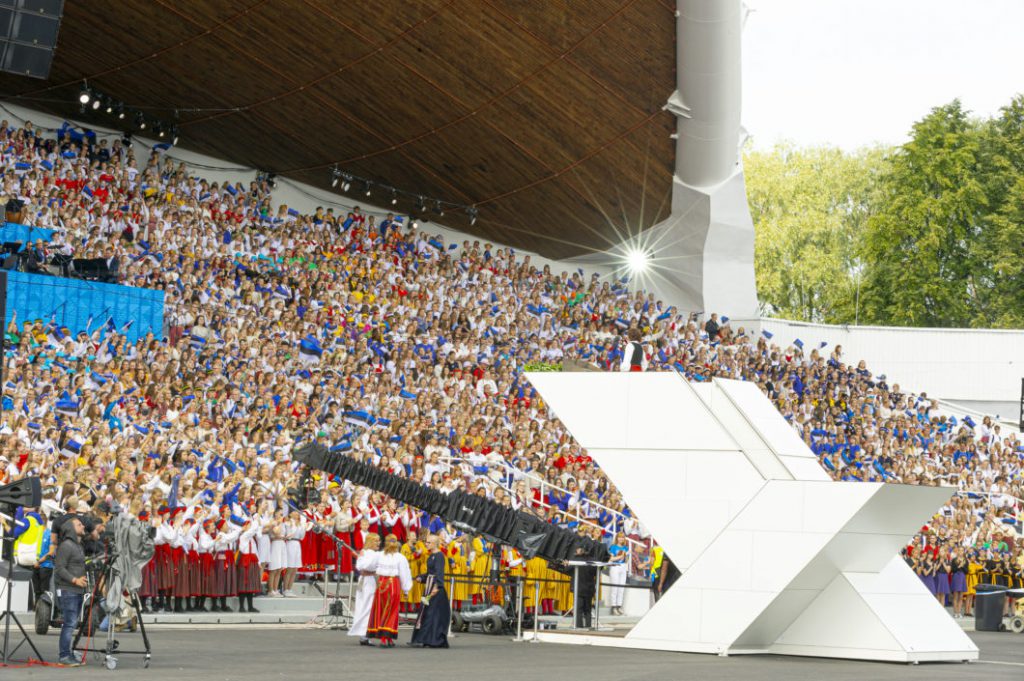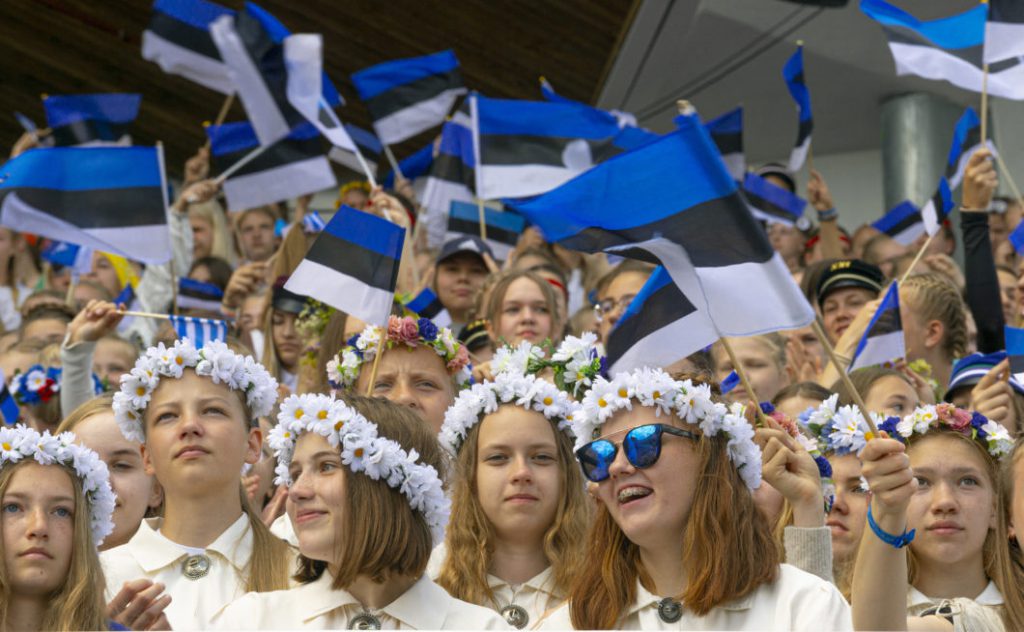The moment a Song Celebration conductor kisses their baton means a tribute to the soul of a nation; the Tallinn-based Italian expat, Milena Spigaglia shares her impressions of the Estonian Song Celebration 2019.
I am currently reading a book about the nation state. The book was published last year in conjunction with the exhibition, “The state is not a work of art”, hosted in Tallinn for the Estonian statehood’s centenary.
The curator of the exhibition, Katerina Gregos, wonders in her preface if it is necessary to rethink the concept of nation in the era of globalisation dominated by pluralist, fluid societies. Basically, it is the very concept of a nation that is questioned by the work of the artists – does it still make sense? Does it make the difference for people?
A soul in a baton
I found the answer during the Estonian Song Celebration in Tallinn, on 7 July. I found it in the eyes of a man called Olev Oja. He was the conductor of the song which gave the name to this year’s edition of the celebration: “Mu Isamaa on minu arm” (“My fatherland is my Love”).
The Estonian nation is alive, and I saw it in his eyes.
Yes, there were plenty of tricoloured flags, a rejoicing of traditional costumes and cornflower wreathes, and children’s hair sparkled in the sunlight (by the way: Estonian children are beautiful), and everything told us so loudly of a country that is quietly, intimately Nordic.

But you have to see those eyes that were burning with passion to understand what it means to love one’s own country.
For almost five minutes, Oja not just led a choir – he conducted an entire country to acknowledge and pay tribute to itself once again. There were some instants when he turned to the singing crowd, as if he was aware to be just one of the many Estonians over there in the multitude, and the song had taken life on its own. He was simply a medium to convoy that canticle of choral devotion.
After completing his performance, cameras caught Oja kissing his baton and bowing down to it. He reminded me of a samurai who worships and takes care of his katana, the instrument through which he expresses his art and his loyalty but, above all, his soul.
Olev Oja made me remember there are many ways to live and serve one’s homeland.
Creating a nation as a work of art
Joining the Song Celebration means not only to partake in a big, colourful, cheerful summer event. Here, the Estonian people meet to recognise themselves as a nation, as if they said – in spite of all, we stood. Here, they celebrate their music and their language, the true foundation of the coriaceous Estonian state because, as Emil Cioran wrote, “one does not inhabit a country; one inhabits a language; that is our fatherland – and no other”.
Or, to quote one of the works from an exhibition, the Danish artist Lise Harlev (who participated in creating a big fabric banner for the Tallinn Art Hall’s façade), “mõtleme oma emakeeles ka siis, kui selles ei räägi” – “we think in our mother tongue even when we don’t speak it”.
Somebody may object – nations are not born. They are created, a little like a work of art. They are built on myths and symbols. They tell a story. They need patience and commitment, sweat and tears. They show many nuances. But something built is not less true and valuable than what we find in nature.
On the contrary, the efforts that are put in the building process testify the will and the vision behind it. They state the choice of a project, even when this project needs adjustments along the way. At times these adjustments are really what define the core of a national identity.
As the Estonian historian Marek Tamm writes, a nation rests on a narrative, a performance, a visualisation of its identity, because “the key issue is how to make the idea of nation concrete, ‘actual’, emotionally graspable for people”.
The Song Celebration is the Estonian idea of a nation performed.
Maybe the state is no perfection, it is not a work of art. But a work of pure art like the Song Celebration can surely contribute to make a state.
The opinions in this article are those of the author. Cover: Performers at the Estonian Song Celebration 2019. Photo by Ruslan Strelchenko.

